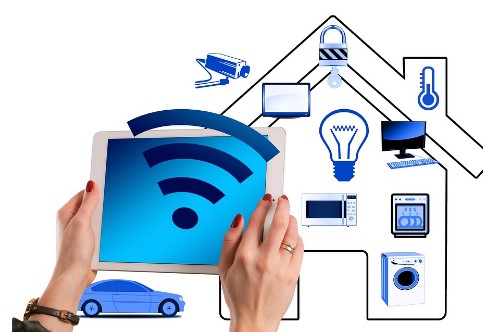The fastest-growing category will be smart speakers, with a five-year compound growth rate of 39.1%, such as Amazon Echo and Google Home.
According to the International Data Corporation (IDC) global smart home equipment quarterly tracking report, the global smart home equipment market is expected to grow 31% year-on-year in 2018, reaching 643.9 million units shipments.
By 2022, the entire smart home market—including smart speakers, video entertainment products, networked lighting, smart thermostats, and home monitoring/security products—is expected to reach nearly 1.3 billion devices, with a five-year compound annual growth rate (CAGR) It is 20.8%. The fastest growing category is smart speakers, such as Amazon Echo and Google Home, with a five-year compound growth rate of 39.1%, nearly 100 million units in 2018, and 230.5 million units in 2022.

IDC mobile device tracker senior research analyst Jitesh Ubrani said: "Although smart speakers with built-in voice assistants will prevail throughout the forecasting process, we have seen significant changes in this market." "Many new devices inside and outside the home are now Both include a built-in voice assistant function, which not only helps to increase the number of touch points available to end users, but by expanding the scope of contact, you can gain insights into the content, time and way users handle various tasks, and also help the development of each assistant ."
Smart home privacy issues abound
IDC's recent consumer IoT survey shows that privacy and security are still one of the main obstacles to the adoption of smart home devices. However, IDC remains optimistic about the market prospects, because the convenience of smart home devices often exceeds people's concerns.
Adam Wright, senior research analyst for IDC's Consumer Internet of Things project, said: "When considering the deployment of smart home devices, security and privacy are the top priorities for most consumers." "In addition to the need for adequate security when bringing devices to market In addition to solutions, suppliers must also respond to consumers' concerns, properly advertise security measures to them, and raise their awareness of the benefits of sharing data, which can ultimately provide better equipment, services, and user experience. "
Category highlights
Video entertainment products mainly include smart TVs and digital media adapters, such as Google’s Chromecast, Apple TV, Fire TV and Roku devices. As the center of the living room, this category is expected to grow, and is expected to reach 457.5 million by 2022, with a five-year compound annual growth rate of 10.9%. For many brands and consumers, this category is expected to become the gateway to the smart home ecosystem. Therefore, IDC expects that this category will face huge competition in content and price.
Home surveillance/security equipment, from door and window sensors to door locks and IP cameras, is expected to account for 19.4% of the smart home market by the end of 2022. Although this category has great potential and will grow by 27.3% in five years, they are still aimed at a limited number of consumers, especially homeowners, because most products still cannot provide value for consumers living in apartments.
Although smart speakers have attracted much attention today, they will only become the third largest category in 2022. Many vendors launch products with the support of Amazon Alexa or Google Assistant. And Siri, Cortana, and Bixby are also expected to establish widespread availability, although none of these assistants will challenge Google or Amazon's position in terms of shipments. There is still a considerable part of the market that will not run on any of these platforms. IDC predicts that the market for these smart speakers will mainly belong to China, where existing companies such as Xiaomi and Alibaba have already occupied a large share of China.
Smart lighting, thermostats and other products will occupy a place in the smart home market, providing users with a complete ecosystem of products and services to control and monitor their homes. The five-year compound annual growth rate of these categories is expected to reach 26.9%, and lighting products (such as Philips Hue) account for almost one-third of shipments. Although thermostats are very popular in North America, they will face weaker growth in other parts of the world, because many countries do not use central air-conditioning systems, so special thermostats are not needed.
Guangzhou Yunge Tianhong Electronic Technology Co., Ltd , https://www.e-cigarettesfactory.com